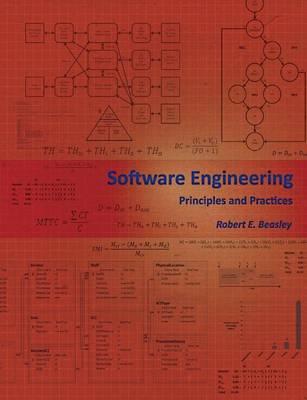Overview
AUDIENCE Software Engineering: Principles and Practices (SEPP) is intended for use by college or university juniors, seniors, or graduate students who are enrolled in a general one-semester course or two-semester sequence of courses in software engineering and who are majoring in computer science, applied computer science, computer information systems, business information systems, information technology, or any other area in which software development is the focus. It is assumed that these students have taken at least two computer programming courses as well as any additional computing courses required in the first two years of their major. SEPP may also be appropriate for use in an introductory survey course in a full-fledged software engineering curriculum. In such a course, the instructor can choose the topics to be covered as well as the depth in which those topics are treated in an effort to provide freshmen or sophomore software engineering students with a preview of the concepts they will encounter later in their curriculum. SWEBOK CONTENT SEPP covers or touches on most of the topics listed in the Software Engineering Body of Knowledge (SWEBOK) Guide V3. This guide contains a comprehensive description of the knowledge required of a professional software engineer after four years of experience and is viewed by the IEEE as the authoritative source of software engineering knowledge. In addition, the Guide was used to inform the contents of the Computer Science Curricula 2013: Curriculum Guidelines for Undergraduate Degree Programs in Computer Science and the Software Engineering 2013 Curriculum Guidelines for Undergraduate Degree Programs in Software Engineering, both of which were developed by a joint task force of the IEEE Computer Society (IEEE-CS) and the Association for Computing Machinery (ACM). FEATURES * The beginning of each chapter includes a relevant and thought-provoking quote that can be used by the instructor to pique the interests of his or her students and generate some initial discussion about the topic at hand. * The beginning of each chapter also includes a big question of the form: What is...? The answer to this question is then answered in the following paragraph. This paragraph provides students with both a succinct definition of the term and a context into which the chapter's concepts can be placed. * Since a large amount of information can be represented in a relatively small space using a table, and since a picture is worth a thousand words, the text includes over 230 tables and figures. * In many places in the text, talking points are displayed as bulleted lists instead of being buried in the narrative. * A significant proportion of the examples in the text are drawn from the real-life experiences of the author's own software development practice that began in 1987. * Every effort has been made to present concepts clearly and logically, utilize consistent language and terminology across all chapters and topics, and articulate concepts fully yet concisely. * Specialized, trendy, and/or arcane language that is inaccessible to the average software development student is either clearly defined or replaced in favor of clear and generalizable terminology. * Although references to the original works that contain the formulas discussed in the text are provided, these formulas have been transformed into a predictable and uniform mathematical notation. * The introductory chapters and the chapters that cover the umbrella activities and tasks of the SDLC include projects that require students to apply something they have learned in the chapters. INSTRUCTOR SUPPLEMENTS * Lecture/Discussion Outlines * PowerPoint Presentations * Test Banks * Real-World Case Studies STUDENT SUPPLEMENTS * Form Templates * Videos
Full Product Details
Author: Robert E Beasley Phd
Publisher: Createspace Independent Publishing Platform
Imprint: Createspace Independent Publishing Platform
Dimensions:
Width: 18.90cm
, Height: 2.70cm
, Length: 24.60cm
Weight: 0.930kg
ISBN: 9781497542709
ISBN 10: 1497542707
Pages: 528
Publication Date: 04 July 2014
Audience:
General/trade
,
General
Format: Paperback
Publisher's Status: Active
Availability: Available To Order

We have confirmation that this item is in stock with the supplier. It will be ordered in for you and dispatched immediately.
Author Information
Robert E. Beasley is Professor of Computing at Franklin College in Franklin, IN where he teaches a variety of courses in software development, including software engineering. He received both his BS and MS degrees from Illinois State University and his PhD from the University of Illinois at Urbana-Champaign. He has been developing software since 1981, has been an active software consultant in both the public and private sectors since 1987, and has been teaching software engineering since 1995. He has authored two books on software engineering, contributed chapters to two books, published over 50 articles in refereed journals and conference proceedings, and delivered numerous speeches and keynote addresses at international conferences.




